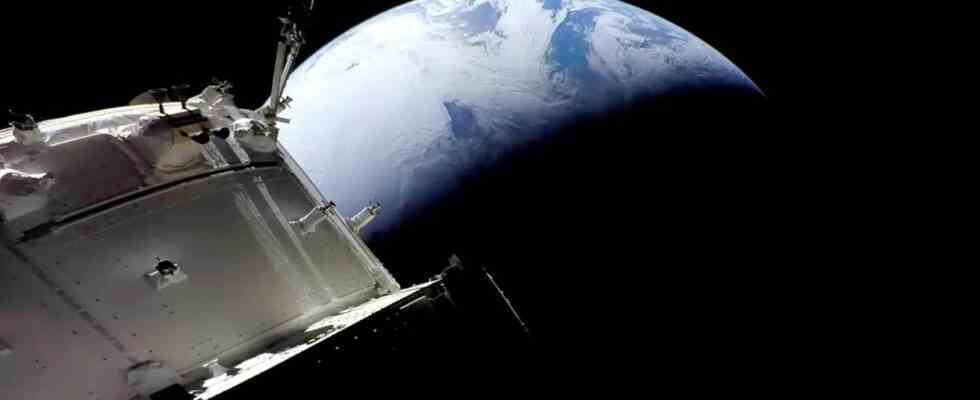Important test mission successful
“A historic moment”: NASA’s “Orion” capsule has landed again on Earth
View of the Earth from the Orion capsule. At this point the vehicle was on its way back
©Uncredited/NASA/AP/DPA
Another small step in space, but a big step for mankind: The unmanned capsule “Orion”, which was launched into space on the “Artemis” mission, has returned. And there are already plans for the future.
After about four weeks in space, the unmanned “Orion” capsule of NASA’s “Artemis 1” moon mission is back on earth. She landed as scheduled in the Pacific off the coast of Mexico on Sunday evening, as shown in live images from the US space agency Nasa. “Splashdown,” NASA wrote on Twitter. The test mission is considered an important step in getting humans back on the moon.
The “Orion” capsule is now back home, wrote Nasa. She traveled 1.4 million miles through space, circumnavigated the moon and collected data. This will help NASA prepare to send astronauts to the moon on other Artemis missions. NASA boss Bill Nelson spoke of a “historic” day.
“A historic moment and milestone in space travel,” wrote the German astronaut Alexander Gerst on Twitter. “Humanity once again has a spaceship that can carry humans beyond Earth orbit into space to explore the Moon & Mars.” He congratulated the teams involved for this “fantastic performance”.
The return of the Orion capsule looked “like in a picture book”, said Martin Tajmar, space systems expert at the TU Dresden, on Sunday evening of the German Press Agency. However, it should take days before all the data from the landing have been evaluated.
Artemis started late and at great cost
With the help of specialists, divers and boats, “Orion” is now to be brought to the port of San Diego. Even before landing, Nasa boss Nelson had described the “Artemis” test mission as an “extraordinary success”. With the “Artemis” program, named after the Greek goddess of the moon, US astronauts are to land on the moon again in the coming years, including for the first time a woman and a non-white person.
A first manned flight (“Artemis 2”) around the moon is to be followed by another manned flight including a moon landing (“Artemis 3”). NASA brought the last humans to the moon in 1972 with the “Apollo 17” mission. Overall, the United States was the only country to date to land twelve astronauts on the moon with the “Apollo” missions between 1969 and 1972.
“Artemis 1” was launched – after cost explosions and repeated postponements – on November 16 with the “Space Launch System” rocket from the Cape Canaveral cosmodrome in the US state of Florida. All of the planned milestones were then ticked off for about four weeks: flyby the moon, swinging into orbit of the moon, swinging out of orbit, another flyby by the moon – and now: landing. The European Space Agency Esa and space agencies from several other countries are also involved in “Artemis”.

